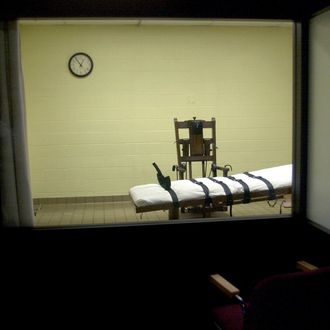
The Supreme Court ruled today that Oklahoma’s use of midazolam in its lethal-injection procedure does not violate the Eighth Amendment ban on cruel and unusual punishment. The decision was 5–4, and Justice Samuel Alito wrote the majority opinion. He argued that the inmates on death row in Oklahoma who had brought forward the case did not prove that a less painful alternative existed.
During the execution of Clayton Lockett last year, Oklahoma administered a three-drug cocktail that included the sedative midazolam. It took him 43 minutes to die. This year, Oklahoma executed Charles F. Warner, who said that his “body is on fire” and “it feels like acid” after the drugs were administered. In recent years, it has been difficult for states with the death penalty to find drugs to use for lethal injection, as pharmaceutical companies and businesses in foreign countries have become increasingly wary of being affiliated with causing death.
Justice Stephen Breyer was joined with Justice Ruth Bader Ginsburg in one dissent, while Justice Sonia Sotomayor had another, joined by Breyer, Ginsburg, and Justice Elena Kagan.
Sotomayor argued that the Court was “imposing a wholly unprecedented obligation on the condemned inmate to identify an available means for his or her own execution. The contortions necessary to save this particular lethal injection protocol are not worth the price.”
The Court’s available-alternative requirement leads to patently absurd consequences. Petitioners contend that Oklahoma’s current protocol is a barbarous method of punishment—the chemical equivalent of being burned alive. But under the Court’s new rule, it would not matter whether the State intended to use midazolam, or instead to have petitioners drawn and quartered, slowly tortured to death, or actually burned at the stake: because petitioners failed to prove the availability of sodium thiopental or pentobarbital, the State could execute them using whatever means it designated.
Breyer agreed with Sotomayor, but he had something else he wanted to address.
But rather than try to patch up the death penalty’s legal wounds one at a time, I would ask for full briefing on a more basic question: whether the death penalty violates the Constitution. The circumstances and the evidence of the death penalty’s application have changed radically since then. Given those changes, I believe that it is now time to reopen the question.
The more liberal Supreme Court justices seem hungry for a debate about lethal-injection drugs, but the entire idea of the death penalty itself. Given the outcome of this case, it seems unlikely that the current Court would change anything about the death-penalty system. Justice Antonin Scalia ended his concurring opinion in this case by noting that “Justice Breyer does not just reject the death penalty, he rejects the Enlightenment.”
Time and again, the People have voted to exact the death penalty as punishment for the most serious of crimes. Time and again, this Court has upheld that decision. And time and again, a vocal minority of this Court has insisted that things have “changed radically,” … and has sought to replace the judgments of the People with their own standards of decency.
Thirty-one states — plus the federal government – still have the death penalty, although executions have grown rare given how hard it is to procure the necessary drugs.





























